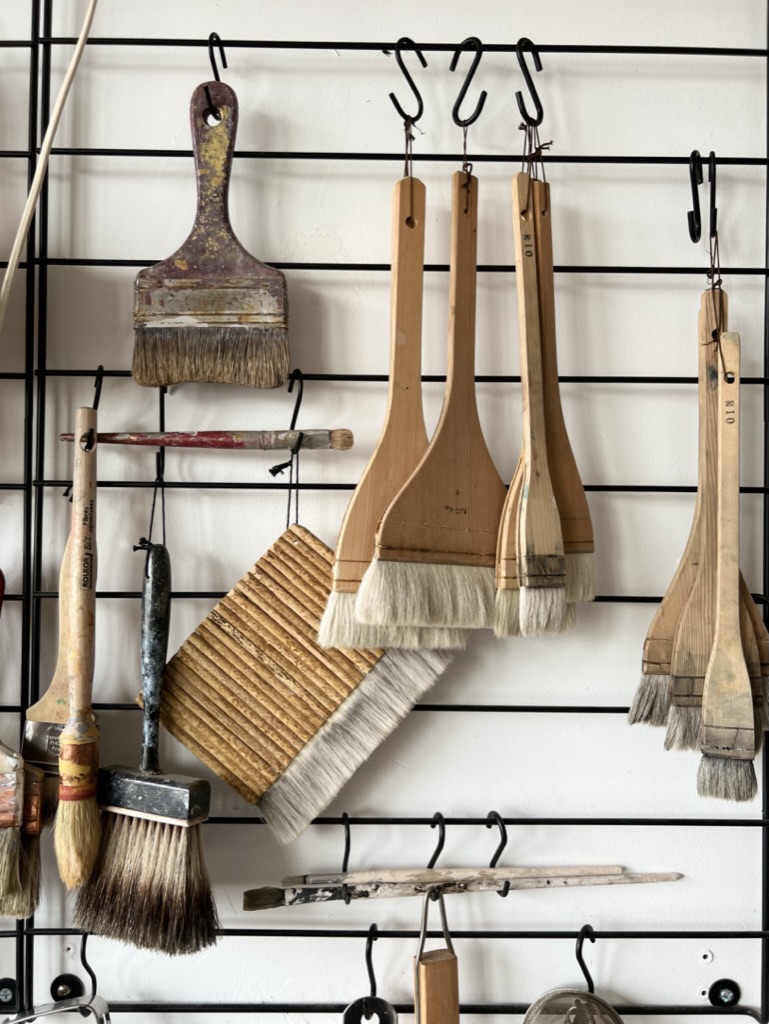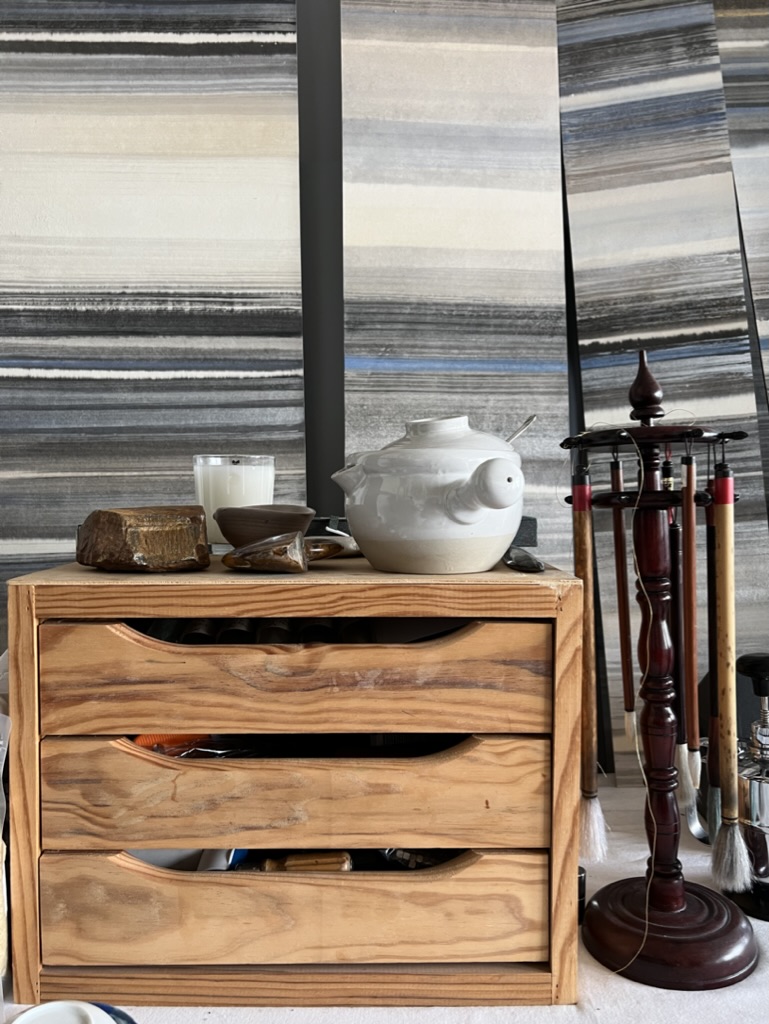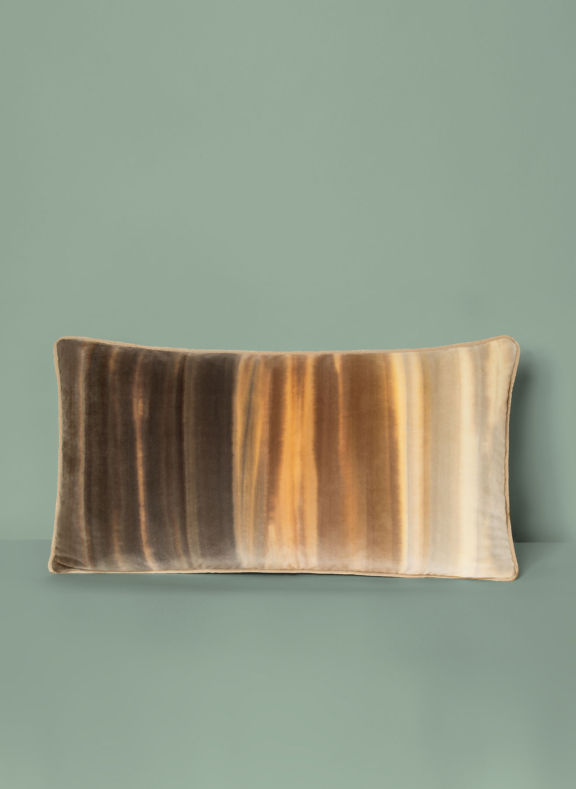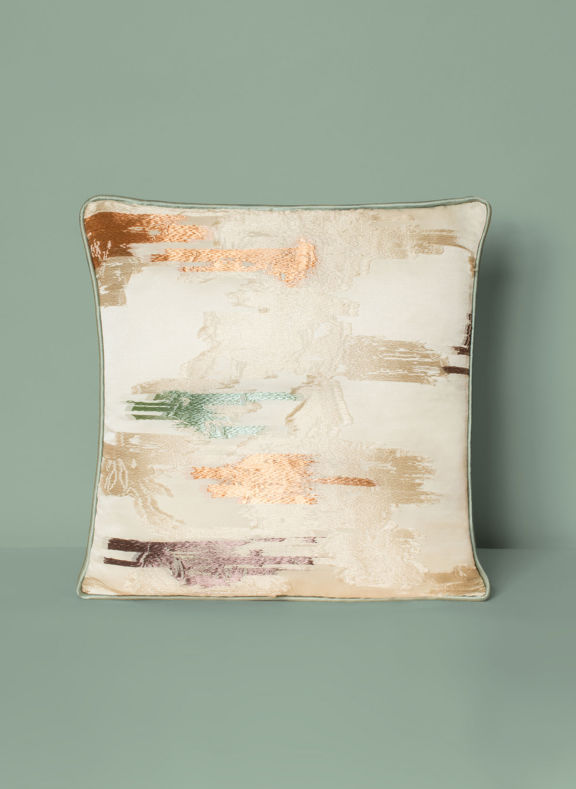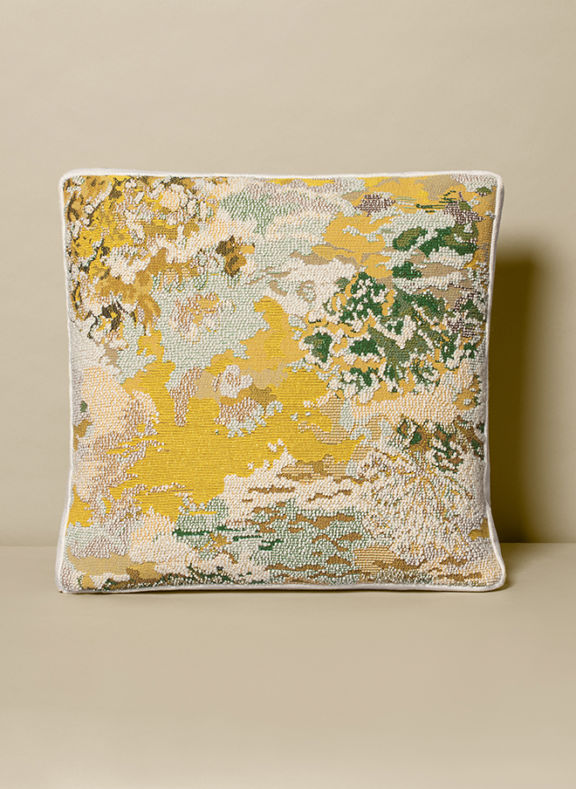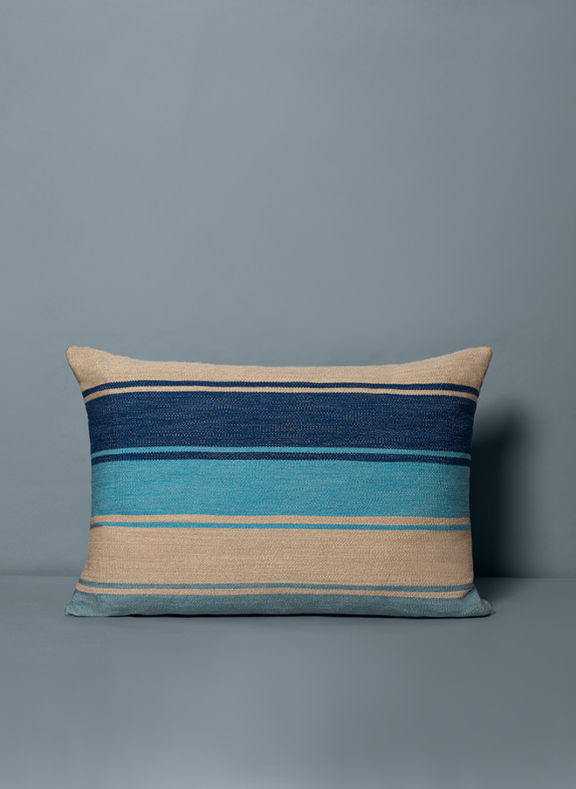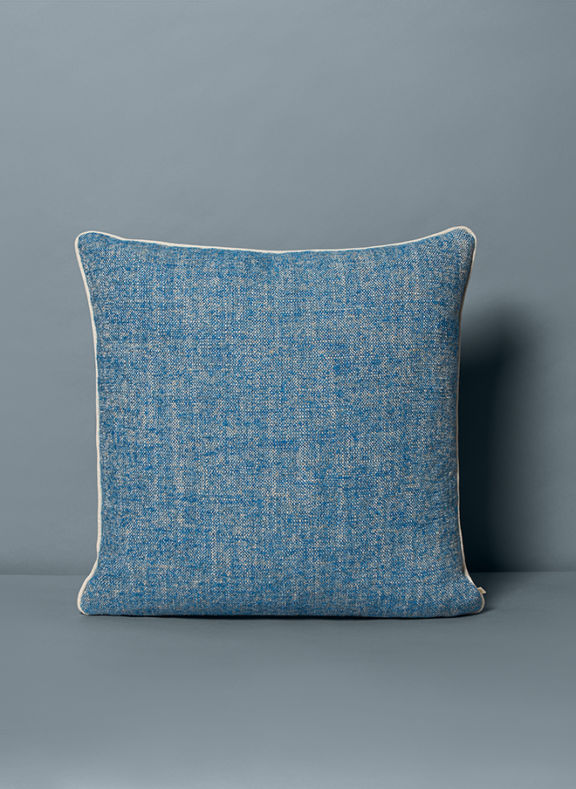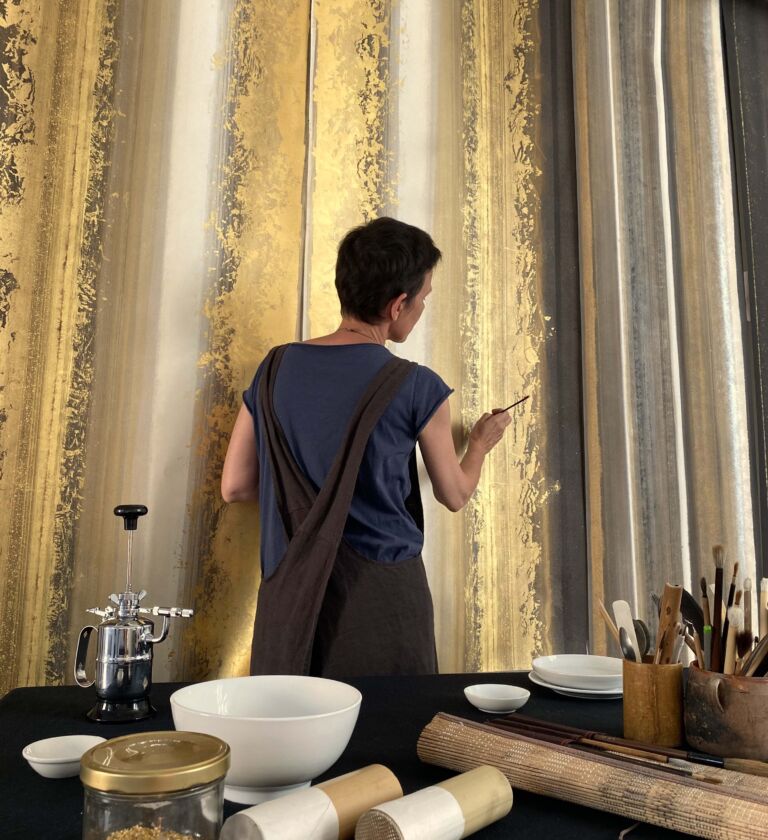
Caroline Besse’s studio is truly constructed in her image. Here, serenity, generosity and creativity are all encompassing. A large bay window fills the room with light, illuminating the works on washi paper pegged to wire which cross the length of the studio. As the paper curls slightly while drying, it comes to life. Vials of vibrant pigment powders are meticulously arranged as Chinese paintbrushes await the collection of precious minerals, and a teapot is placed amongst various containers of dried tea leaves which fill a shelf. The atmosphere is decidedly Zen.
Painter-decorator since 1996, the artist has created her own medium by harmoniously bringing together Western methods and oriental techniques on Japanese washi paper, Chinese ink, and paint created by crushed minerals. As the light reflects onto the paper, the individual colours and dimensions of the minerals come to life. Besse has created her own hybrid art form: between gallery work and bespoke commissions for clients, the hand-painted works are created specifically for their environment. Her portfolio boasts projects for Van Cleef & Arpels in Paris, Rimowa in Hong Kong, the French embassy in Bangui, Central African Republic, as well as interior designers and private clients. For each client she creates personalized and individual projects, bathing the space into the poetry of crushed minerals. In 2022, she is awarded the Grand Prix de la Création de la Ville de Paris, awarded annually to an artist based on the quality of their work. The conscious, the subconscious, the body, and the soul: all these elements speak to one another in Caroline Besse’s paintings, resulting in a final product which is both visceral and holistic. From Buddhism to Chinese medicine, her practice is precisely as she suggests: an art of life and of the self. It is, however, ultimately colour which animates – or rather governs – Caroline Besse’s life and work. For the artist, colour is at once ritualized and spiritual; it represents an emotion which is both entirely individual and universal. Each layer of colour has its own identity and impact. I met Caroline in Paris to discuss her artistic process, the unexpected twists and turns of life, and her favourite meal of sautéed celery.
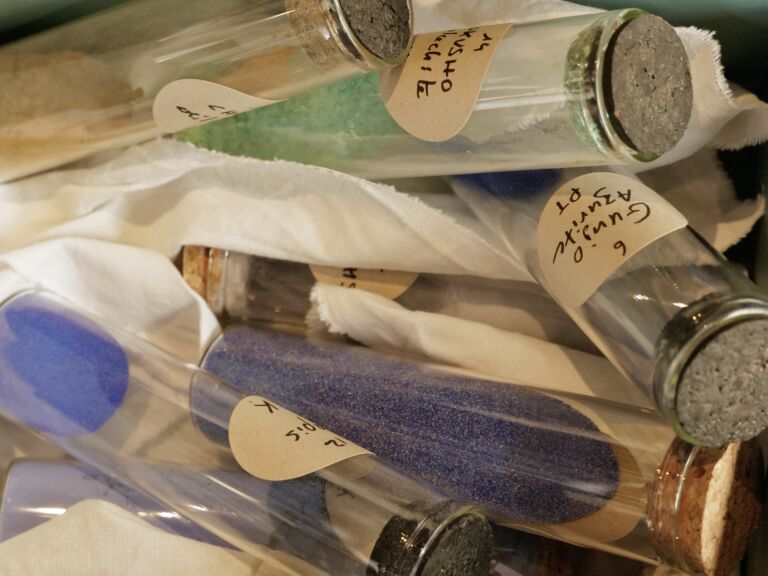
I had been given a box of pastels with a hundred different colours for my fifteenth birthday, a real gem that I had never opened. Once I had moved into my own house, my home, I started using them, diving in headfirst, which led to the most wonderful experience. With oil pastel, the contact with colour is unfiltered by the intermediary of the paintbrush. It was during this time that I began to experiment with different transparencies and light.
Where does the spirituality that guides your practice come from?
When my daughter was born, I encountered the teachings of traditional Chinese medicine. I was searching for both answers to all my interior questioning and paths of reflection to accompany my child’s upbringing. I invested myself in these pursuits for ten years. I was truly amazed by all the doors that meditation and the work on the body could open. I practiced monastic calligraphy, ink painting and sacred Buddhist Chan painting, which led me to study the symbolism of colour and sacred geometry. I also started to work with crushed minerals at this stage and discovered both their intensity and the force of natural colour.
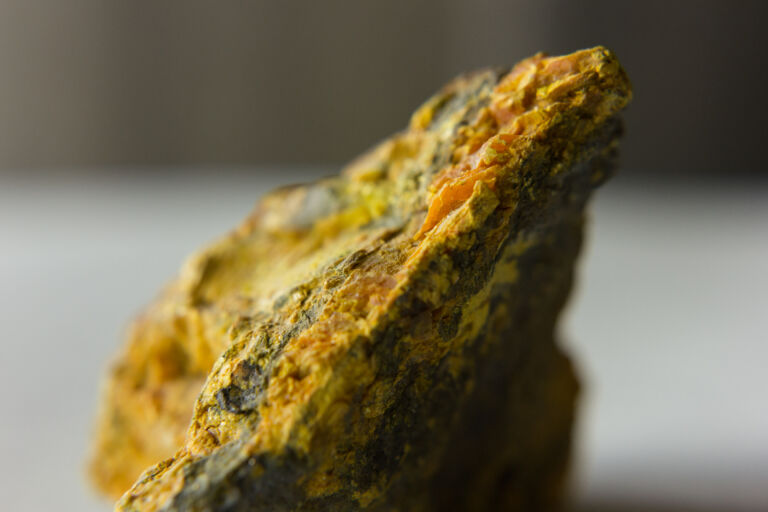
Asian teachings were a starting point for this personal research on color which I then enriched with the western approach of Goethe and Rodulf Steiner who observes the relationship of human beings with each color.
What are the steps in the creation of a Caroline Besse work?
The idea is to represent – or to associate – a colour to the precise interior feeling it incites in the mind. I take my minerals and observe the bodily sensations that emerge from different combinations of their crushed pigments. The use of crushed minerals as pigment has a long history and allow my paintings to contain a kind of stratified story of their own. The colours are not only anchored in the history of painting as a practice, but also to the earth itself, and so there’s a real, deep with nature. I work on a large scale, which reinforces this relation to space.

Firstly, I place a wash of Chinese ink on the entire page of Japanese paper to lay a kind of framework, or a kind of vibration onto the page. Then, I layer my crushed minerals on top. All my pigments are completely natural, which avoids the toxicity of chemical paint, beneficial to both me as an artist, and to the environment. Above all, however, this traditional technique allows me to be in total control of shade and tone. The result is an effect which interacts intimately with light, reflected on each grain of pigment to create real depth. I never make a note of the order of my pigments because I feel that I’d lose this internal guidance or intuition if I structured or theorized the process. Finally, if I want to brighten certain areas, I intensify the colour through gradations and precise rhythms. Through layering minerals,
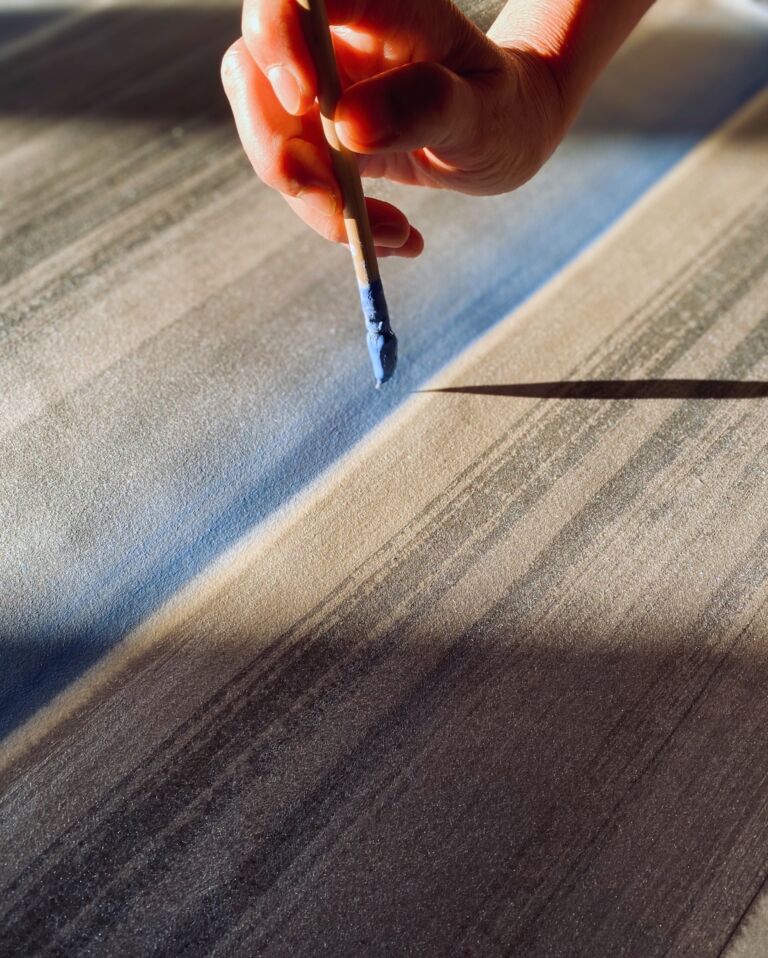
What impact has your career as painter decorator had on your artwork?
As a painter-decorator, it wasn’t decorating as such that fascinated me, but rather the human reaction to colour. When we are in a colourful space, we are changed by the vibration of that colour.

My art also utilizes a Chinese painting principle of inverse perspective, where the gaze doesn’t need to seek out an image from far away, as it comes straight to it. I work with both movement and with what radiates from the stones so that the body directly receives the information transmitted by the colour. For me, the use of large scale, covering an entire wall, creates an immersion, a sort of enveloping which facilitates the encounter of the viewer with their own personal sensation. Today, people don’t take the time to contemplate and really immerse themselves into small paintings. For an audience to feel something, now, it takes immense scale films and immersive artworks. In the past, when we weren’t constantly bombarded with imagery, a small painting could transport us to faraway places.
What does your work bring to a viewer, or a space?
Houses are made for people, so what really matters to me is the person; what a work can bring someone travelling through the space. When I work directly with my clients, the encounter is almost magical. When we speak, when we share with one another, something happens which transcends definition, and so when I begin to work on a project, everything comes naturally to me. Color enables a recentering of the soul. My work therefore consists of very carefully reconnecting subtle relationships. Between breath work, colour, and vibration, it’s really a process which is placed firmly within the realm of the ineffable.
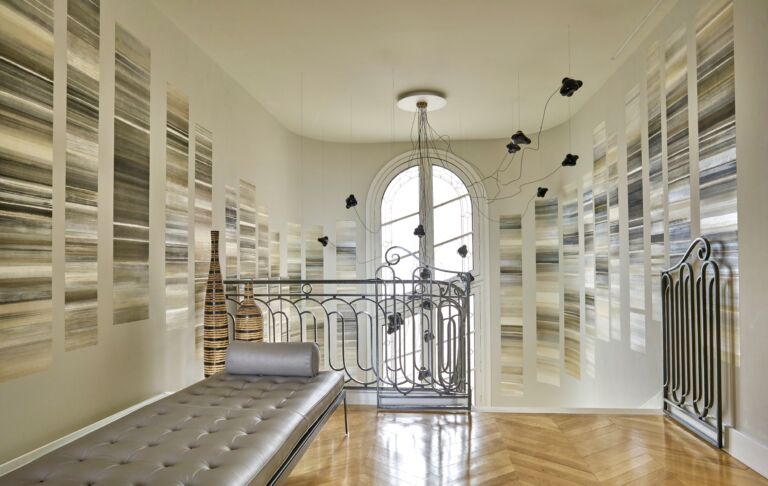
What advice would you give to someone decorating their home?
From the perspective of colour, it’s difficult because of its deeply individual and subjective nature. It also depends on the way we interact with our own space. For some, the home is a space for entertaining and welcoming guests, whereas for others, it is a solitary haven. That’s why it’s very important to identify the colours that make us feel good. In fact, it boils down to something which is at once extremely simplistic and intensely delicate.

And to conclude, let’s discuss your tastes. Do you have a favorite painter?
Odilon Redon. His work is very mystical, and his use of colour is incredible.
A favorite musique genre?
I seek out the rhythm which matches my practice, so it really fluctuates. To work, I need the atmosphere to be calm. Through my daughter, I’ve discovered lots of new music genres, although now I’m making my way back to a bit of classical.
And finally, a favorite meal?
It’s very seasonal. At the moment, it’s celery sautéed with a bit of ginger. I cut the celery into thin slices and cook it in ghee, a clarified Indian butter that I make myself.
Caroline Besse currently lives and works in Paris and in the Vercors Mountains.
Discover her work at carolinebesse.com
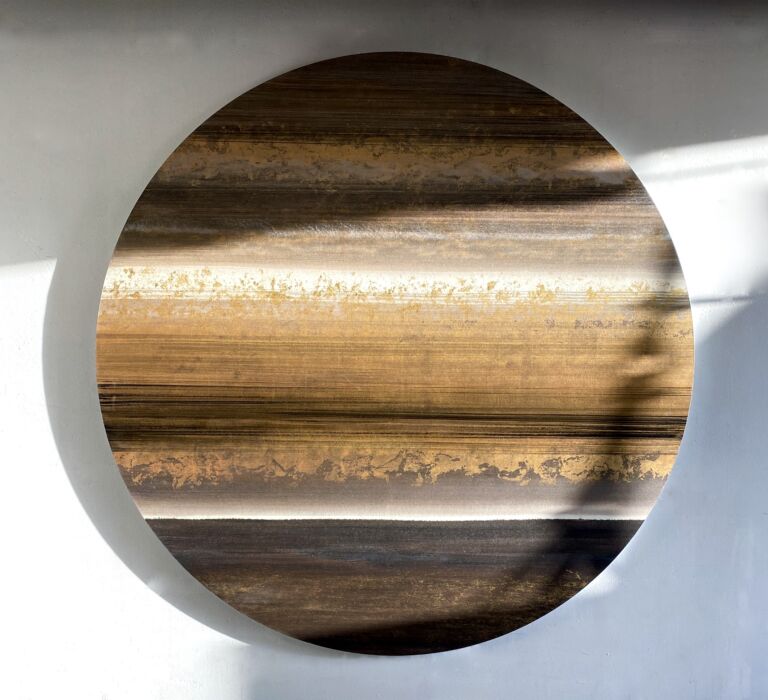
My Product Picks
Further Reading
-

Interior Design Trends: Fall-Winter 2022-2023
Over the last two years, our homes have become offices, spaces to entertain, and, with a bit of luck, sanctuaries. It isn’t so surprising, then, that we now feel the need for a bit of change, brought by touches of colour and texture. I went around Paris Déco Off and Maison & Objet to spot this season’s trends before they hit the showrooms and the living rooms and share my findings with you.
Read more
-
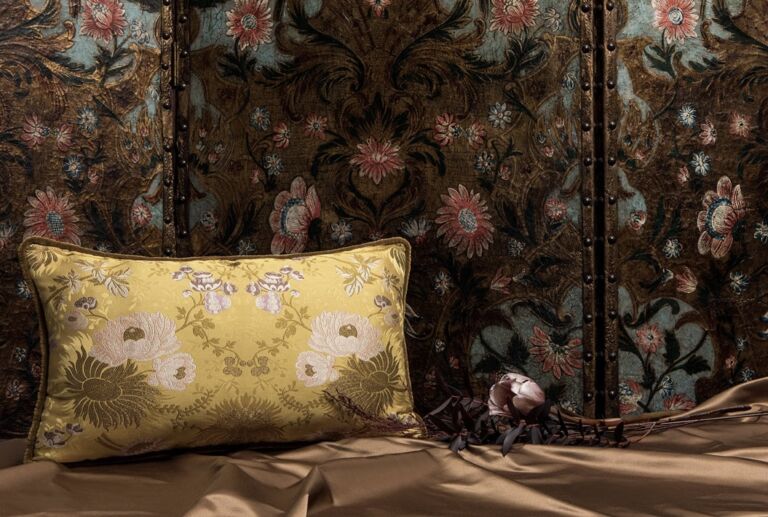
How to Mix and Match Cushions: Choosing a Star Cushion
A few well-chosen cushions can transform the experience of your living space, through a pop of colour or the introduction of a new motif. Find out how to create your own cushion collection.
Read more

